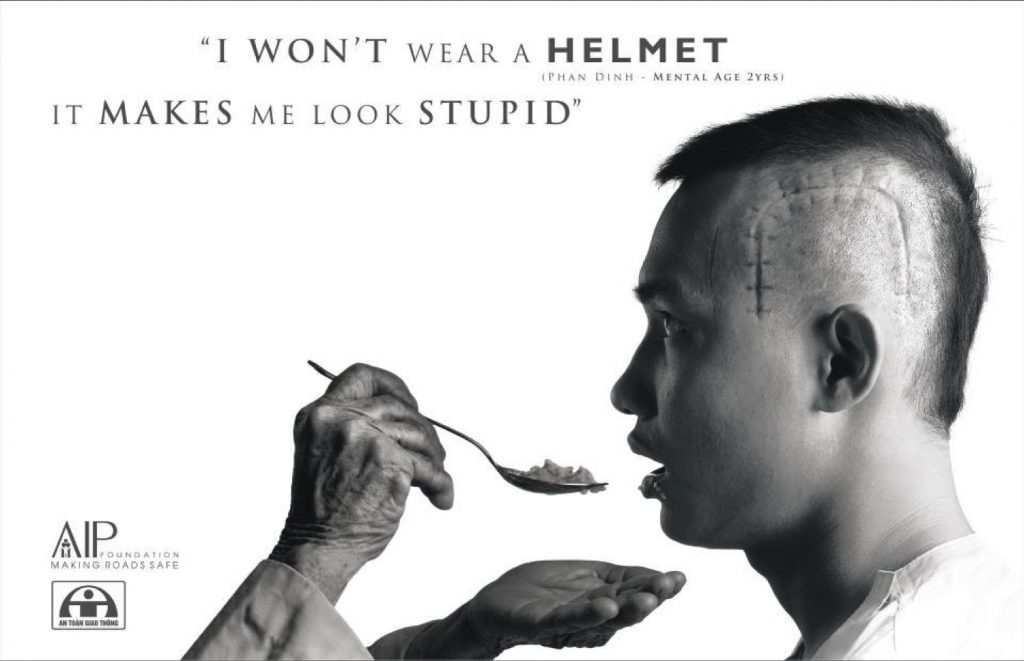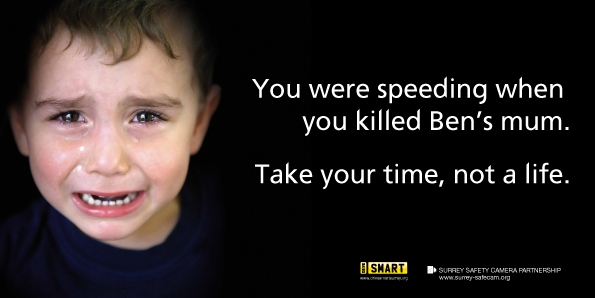Publicity, Road Safety and Enforcement
Introduction
Publicity and road safety should go hand in hand. In the familiar 3E (Engineering, Enforcement and Education) strategy concept for road safety, publicity falls under the E of Education. Moreover, publicity is not a stand-alone road safety intervention. The objective of publicity is to raise and maintain road safety awareness amount the public participating in traffic. This is done mostly by means of campaigns. It also supports and strengthens the effects of other road safety measures.
Objectives
Publicity is mainly used to achieve the following objectives:
- Improving the awareness of traditional, but also of new road safety issues.
- Increasing awareness about the fines and other penalties for violating the rules of the road
- Trying and changing attitudes on road safety issues in society.
Road safety publicity is more effective if it is embedded in a wider strategy to continuously educate and communicate with all road users throughout their lives. This should occur on a wide range of traditional and social media. It should also be seen as a key recurring theme in any society. Such publicity involves issues pertaining to road safety, proper behaviour in traffic, use of infrastructure and vehicles and should be targeted to specific age groups ranging from school children to the elderly.
Planning
Publicity is not a stand-alone activity. This means effective campaigns require careful thought and planning and need to be connected to other activities and organisations.
The GRSP (Global Road Safety Partnership) document on publicity campaigns lists seven elements that should be covered when planning a campaign:
- behaviour to target (what objective)
- audience to target (who)
- appeals to motivate the audience (why)
- message content (what)
- audience activation (how)
- media selection (where)
- campaign timing (when)
Execution
For execution of road safety campaigns the GRSP lists the following process steps:
- Define the problem. Determine the behavioural factors involved in the type of road safety problem under investigation. Base the campaign on solid data and information relating to the problem. Define the key features of the behaviour to be addressed. Identify the target group(s). Assess the social context for the campaign. Consider relevant research and analyse what has worked before with similar issues in other places, areas and countries. Besides the campaign, investigate and identify the complementary government and/or community interventions required to support the desired change in behaviour.
- Determine objectives. The campaign objectives should be specific. They should always be linked to a measurable behaviour change. The objectives can be about shifting community understanding and support for government policies – such as wearing a seat belt or helmet – or about what to do to improve safety, such as driving more slowly. Again all measurable, based on pre and post data e.g. success in lowering the average speed on a certain road or urban area. Don’t forget to also measure the longer term effects.
- Mobilise supporting activities. Political support is essential, depending on the issue, either at the national, regional or local level. Identify the key interventions required to support the desired change in behaviour and the organisations involved and responsible. The police are usually the very important. They are essential partners for campaigns targeting anti-drink drive, anti-speeding and seat belt and helmet wearing, especially when laws are in place that provides effective sanctions for non-compliance. High profile policing well timed with the campaign can send a powerful deterring message.
- Define a lead agency. Successful campaigns are normally managed by a lead agency in consultation with other stakeholders. The lead agency is usually the responsible government department, a national road safety council, or a road safety NGO. Credibility is crucial. Those conducting and designing the campaign must be seen to be relevant, knowledgeable, committed and impartial.
- Get the right skills. Road safety publicity campaigns require a combination of skills. Specialists with behavioural and social science skills should design the content of the campaign and identify the target audience and messages. Delivering the message requires marketing, social advocacy, advertising and social media skills. Project management skills are needed to deliver the campaign as planned, on time and within budget.
- Communications brief. Summarize the behavioural and social objectives of the campaign, the supporting government/community interventions, the target audience and the scope of the campaign. Outline a communications strategy, based on market segmentation and targeting, and the resources available to support the campaign for the benefit of the agency in the next process step.
- Appoint an agency. Recruit an advertising agency to design the campaign in collaboration with the lead agency. It may also be necessary to involve an independent market research company to help design the campaign.
- Develop the campaign. Seek creative ideas on how to convey the messages – keep them simple, clear and few. Test creative concepts on a pilot sample of the main target audience and use the feedback to adjust and finalize the campaign. Research is crucial to developing effective approaches and they are likely to vary for different target groups in different cultures. Other planned government, community and police supporting actions should be planned in conjunction with the campaign.
- Deliver the campaign. Launch the campaign at a high profile media event, complemented by extensive advertising. Properly timed social media action in line with the campaign and advertising is essential. Keep stakeholders informed of progress so that they can reinforce the key message when opportunities arise. Social media refreshers can also be used to maintain the campaign momentum for a longer period.
- Optimise ‘free’ publicity. It is often possible to place editorials and stories in the press to back up paid advertising. There may also be public service radio and TV available, although the market penetration of these services is often limited.
- Evaluate the impact. All major campaigns should be evaluated. This is often done through a pre- and post-campaign survey. Measure behavioural changes, such as improved seat belt or helmet wearing, or reduced speeds. However, sustainable behavioural changes take time to achieve. Short-term changes should be treated cautiously and surveys should also be done long after the campaign launch. These inform decisions about the time intervals between campaigns, for example how frequently to run adverts on TV.

Publicity and traffic enforcement
Many publicity themes for road safety have a direct link with enforcement, for example seat belts, drink driving, speeding, phone and helmet use, etc. Both publicity and enforcement aim to change behaviour, but in a very different way. However, they reinforce each other and should preferably be carried out in sync to optimise the effects of the road safety intervention. Publicity about the road safety results and the allocation of the fines of enforcement efforts is often neglected. But linking these could increase the public support for enforcement considerably. This connection is absent in most countries.
This can be improved, e.g. with a fine notification which includes the reasons, results and fine usage of enforcement for a particular violation can directly link enforcement and publicity.
Examples
Example 1: You are fined for speeding at this location where there have been 6 deadly crashes in the past 5 years. Since we started enforcing speeds here 2 years ago there have been no deadly crashes. Your fine will be used to further improve road safety on this road.
Example 2: You are fined since you were not wearing seat belts. Studies have shown that seat belts reduce the risk of a fatality for front seated persons by 40-50%. Since the seat belt law was introduced 20 years ago, an estimated total of 25,000 traffic deaths were directly prevented. Your fine will be used to fund the next seat belt campaign.
Violators are thus directly confronted with the potential negative effect of their behaviour, the improvement due to enforcement and for what road safety improving action their fine is used. This tailored publicity is bound to increase support for enforcement and thus for road safety in general.

Sources and further reading
GRSP (Global Road Safety Partnership) – http://legacy.grsproadsafety.org/our-knowledge/safer-road-users/campaigns
IRAP (International Road Assessment Programme) Road Safety Toolkit – http://toolkit.irap.org/default.asp?page=treatment&id=51
Road Safety Week Global Hub – Publicity and Media Guidance – http://roadsafetyweek.org/tools-resources/7-main/36-working-with-journalists-and-the-media
Wegman, F. & Hoekstra, T. (2011) IATSS Research – Improving the effectiveness of road safety campaigns: Current and new practices – http://www.sciencedirect.com/science/article/pii/S0386111211000045
